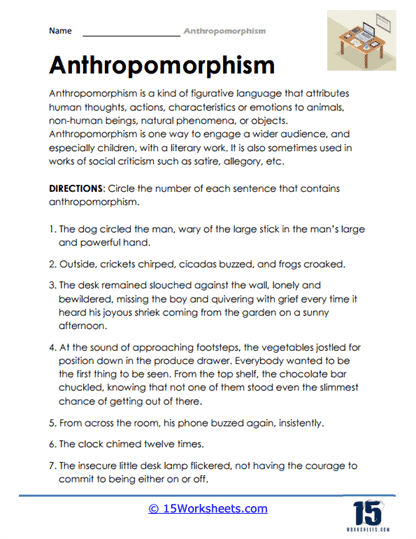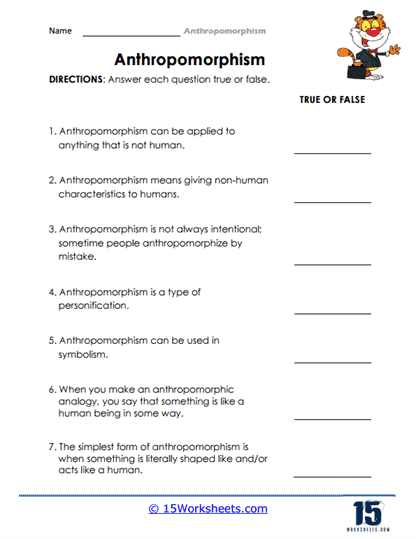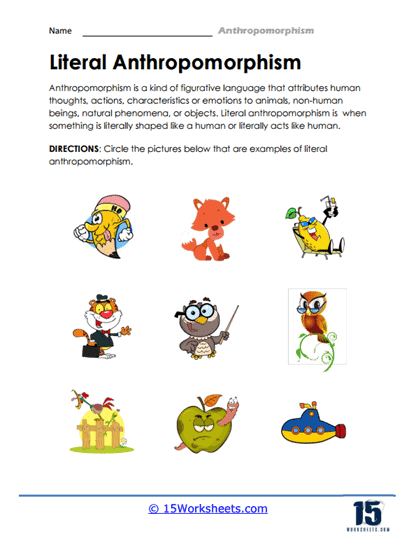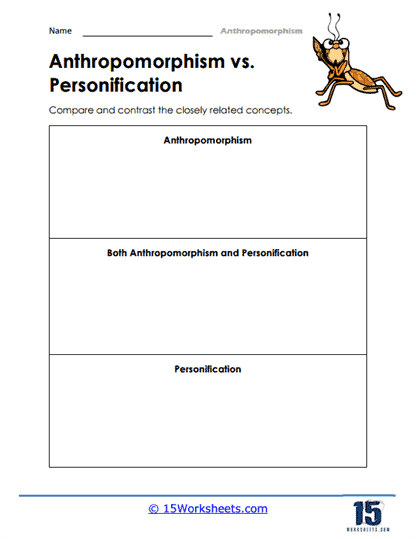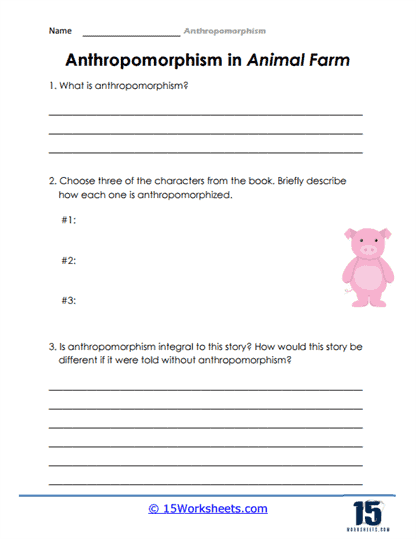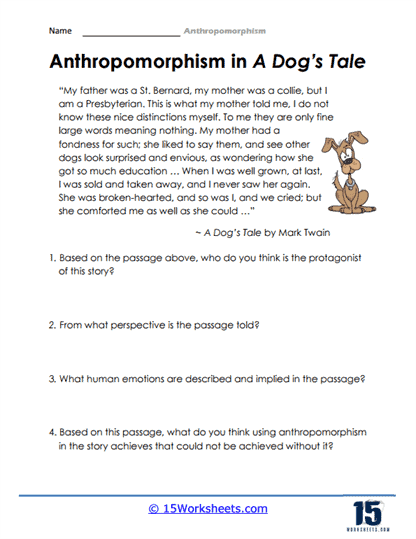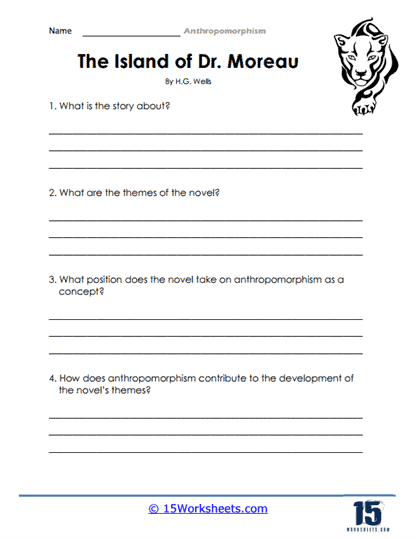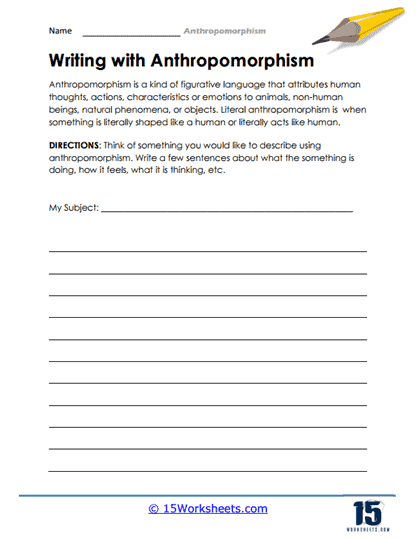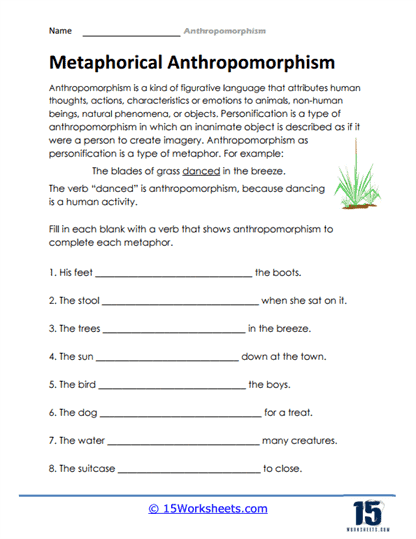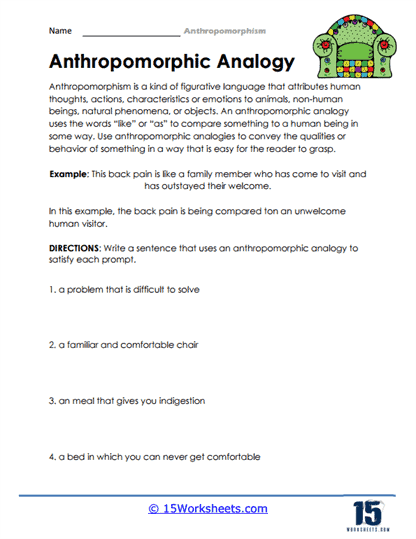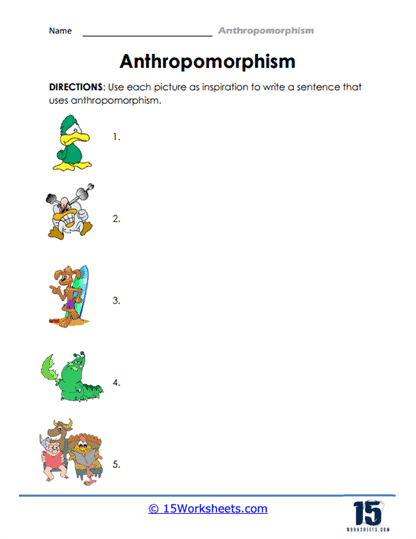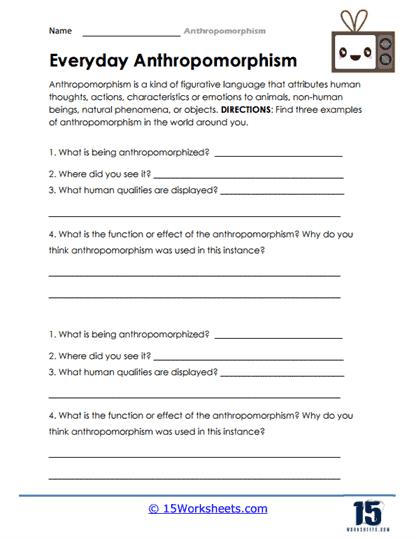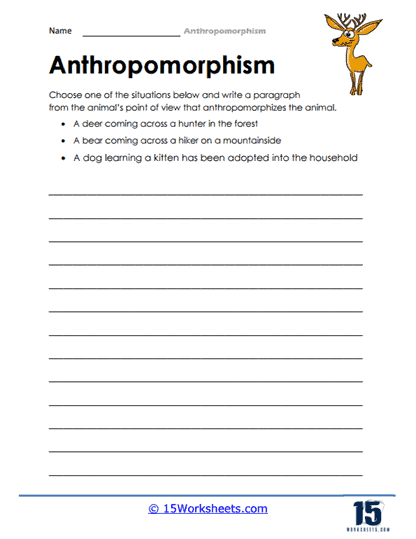Anthropomorphism Worksheets
All About These 15 Worksheets
Anthropomorphism, the literary and artistic device that attributes human characteristics, emotions, and behaviors to non-human entities or objects, is a fascinating and imaginative way to explore the world around us. Understanding and mastering anthropomorphism not only encourages creativity but also deepens empathy, promotes storytelling skills, and enhances communication abilities.
In a world where empathy and creative thinking are essential, students must develop the ability to recognize, appreciate, and employ anthropomorphism in their writing, art, and communication. To empower students with the art of anthropomorphism and its myriad applications, we proudly present a collection of 15 worksheets on Anthropomorphism.
How Do These Anthropomorphism Worksheets Help Students?
These worksheets are meticulously designed to provide students with structured and engaging opportunities to explore, practice, and master anthropomorphism as a powerful tool for creative expression.
These worksheets help students learn about a fascinating literary technique called anthropomorphism. Anthropomorphism is when animals or objects are given human characteristics, such as thoughts, feelings, or behaviors.
In these worksheets, you’ll see examples of animals, objects, or even nature itself being portrayed as if they were human. For instance, a talking animal or a tree with emotions. The worksheets might ask you to identify instances of anthropomorphism or even create your own examples.
The goal of anthropomorphism worksheets is to help you understand how authors use this technique to make stories more interesting and relatable. By imagining non-human things as having human traits, authors can create engaging and imaginative worlds that capture your attention.
Why Do Authors Use Anthropomorphism As A Literary Device?
Authors use anthropomorphism as a literary device for several reasons. Here are five examples:
Making Complex Concepts Accessible
Anthropomorphism allows authors to make complex or abstract concepts more relatable and understandable by personifying them through familiar human traits. For instance, in George Orwell’s novel “Animal Farm,” the animals are anthropomorphized to represent different political ideologies, making the themes of power and corruption more accessible to readers.
Eliciting Empathy and Emotional Connection
By giving animals or objects human characteristics, authors can evoke empathy and create emotional connections with readers. Anthropomorphism allows readers to relate to the experiences, emotions, and struggles of non-human characters. In E.B. White’s “Charlotte’s Web,” the spider Charlotte is given human traits, leading readers to empathize with her efforts to save Wilbur the pig.
Adding Humor and Entertainment
Anthropomorphism can bring a sense of humor and entertainment to stories. When animals or objects behave in human-like ways, it often leads to amusing or unexpected situations. In A.A. Milne’s “Winnie-the-Pooh,” the animal characters, such as Pooh and Tigger, have distinct personalities and engage in comical adventures that captivate readers.
Conveying Moral Lessons or Values
Anthropomorphism can be used to convey moral lessons or teach values. By personifying animals or objects, authors can present ethical dilemmas and explore human virtues and vices. In Aesop’s Fables, animals are anthropomorphized to teach moral lessons, such as the story of “The Tortoise and the Hare” illustrating the value of perseverance.
Expanding Imagination and Creativity
Anthropomorphism fuels imagination and creativity by transforming the ordinary into extraordinary. By attributing human traits to non-human entities, authors open up limitless possibilities for storytelling and world-building. In C.S. Lewis’s “The Chronicles of Narnia,” anthropomorphized animals like Aslan the lion contribute to the magical and imaginative world of Narnia.
The Importance of Understanding Anthropomorphism
Understanding anthropomorphism and its various forms is of great importance for several reasons:
- Creative Expression: Anthropomorphism fosters creativity by allowing students to envision and describe non-human entities in relatable, human-like terms.
- Empathy and Perspective-Taking: Engaging with anthropomorphism encourages students to consider the feelings, motivations, and experiences of others, promoting empathy and understanding.
- Storytelling Skills: Mastery of anthropomorphism enhances students’ storytelling abilities, enabling them to create engaging narratives that resonate with readers or viewers.
- Communication Skills: Learning to employ anthropomorphism enhances students’ ability to convey complex ideas and emotions in a vivid and accessible manner.
This collection of Anthropomorphism worksheets is a valuable resource for educators and parents committed to nurturing creativity, empathy, critical thinking, and effective communication in students. Proficiency in recognizing, creating, and appreciating anthropomorphism equips individuals with the tools to engage with the world in a more imaginative and empathetic way, enhancing their ability to express complex ideas and connect with others on a deeper level.
This collection is an investment in their future success, ensuring they have the creative skills to express themselves with depth and resonance. Embrace these worksheets today, and watch your students embark on a journey of imaginative exploration, creative storytelling, and empathetic understanding through the art of anthropomorphism.

